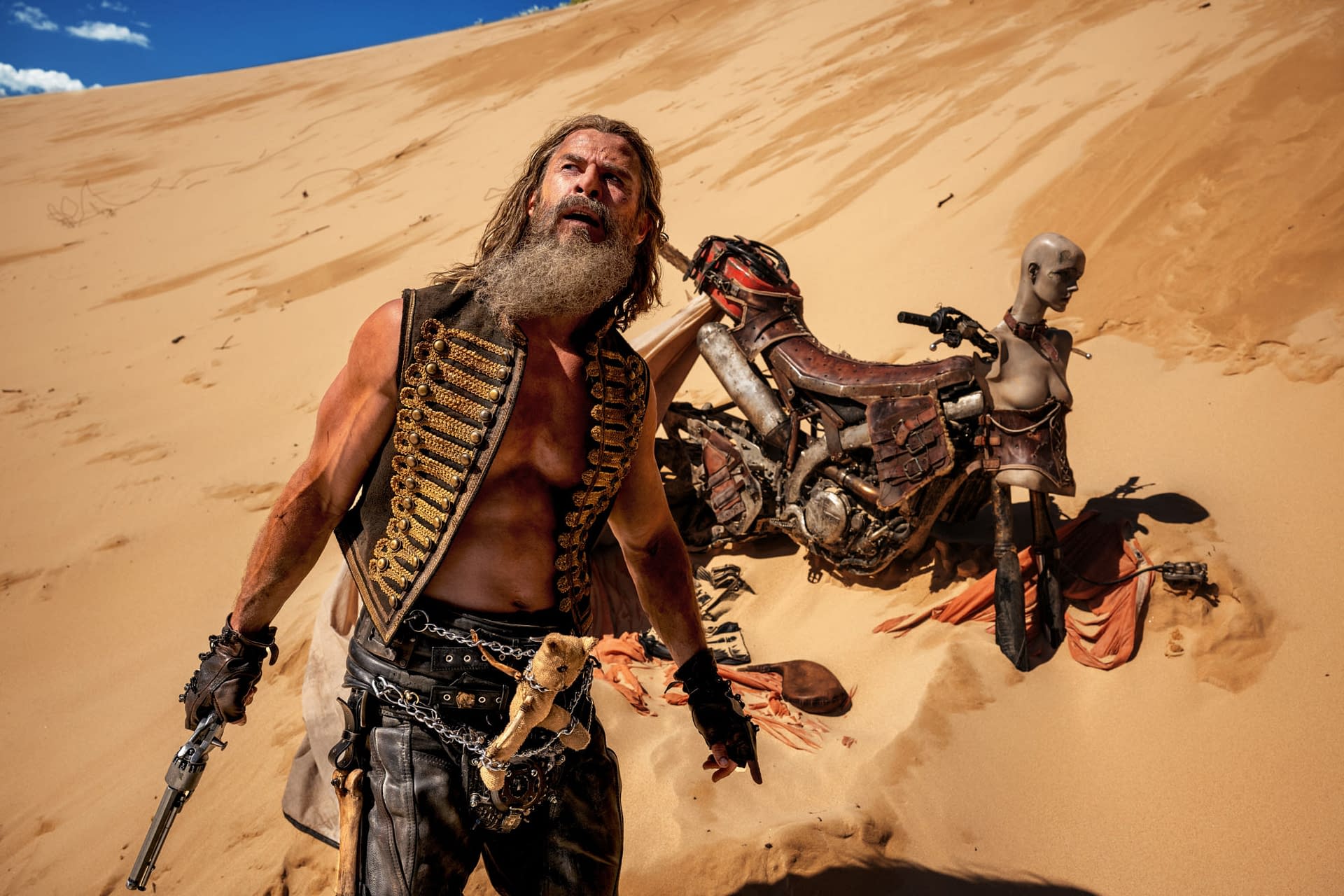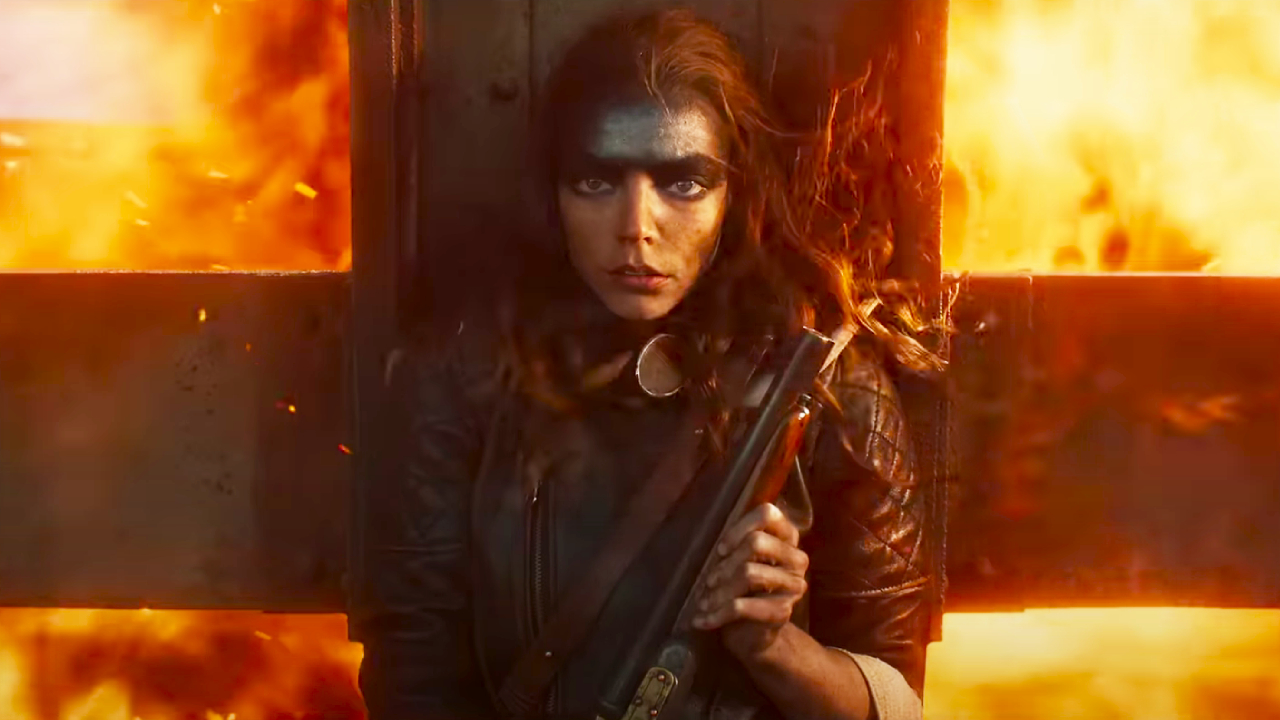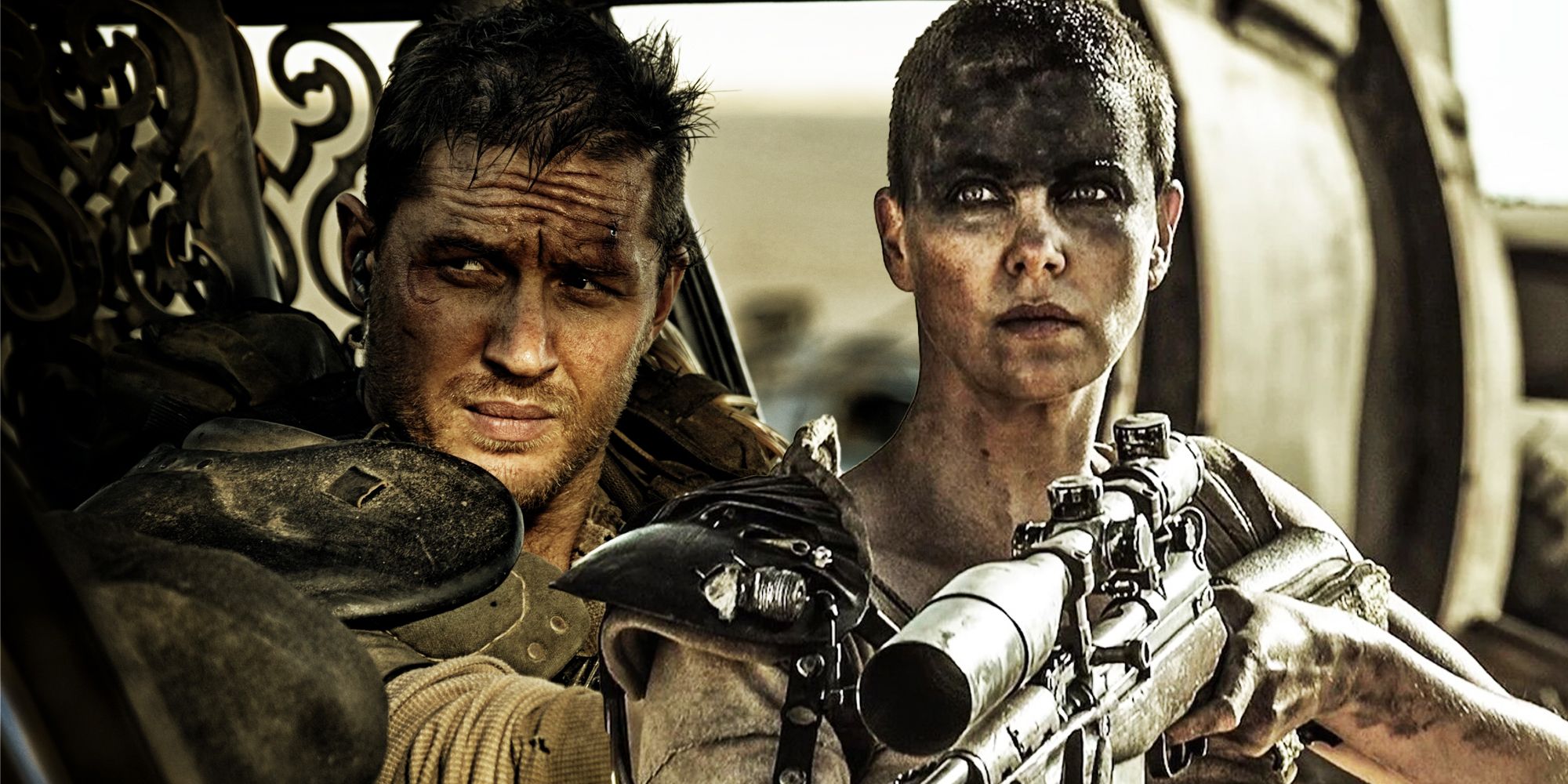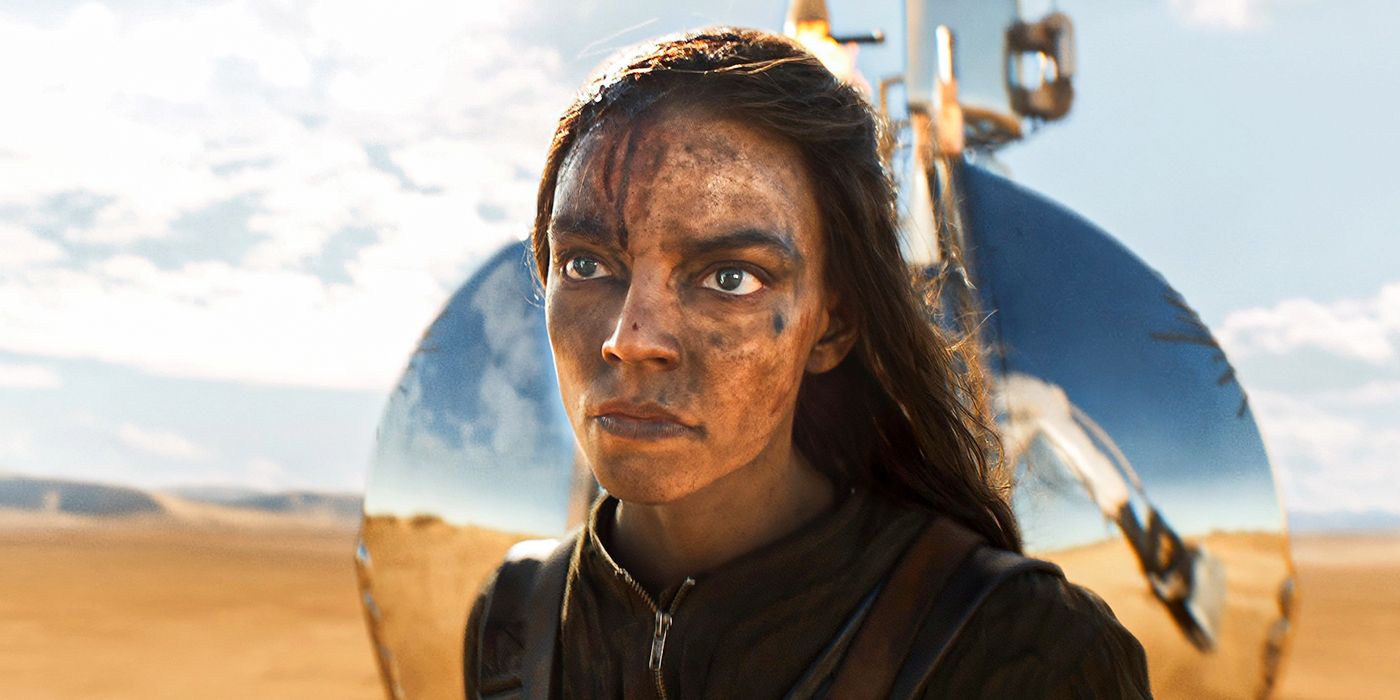Among the most anticipated films in 2024 is “Mad Max: Furiosa,” a sequel-prequel to “Mad Max: Fury Road” released in 2015, which has been widely acclaimed by film enthusiasts as one of the best action films of the past two decades. Why? Simply because “Mad Max: Fury Road” offered two hours of continuous action, featuring an intense car chase that was perfectly paced and filmed in the Namib Desert in Africa, where 80% of the stunts were performed without digital trickery, using genuine vehicles and real stunt performers. The production faced accusations of environmental damage due to its intensity. “Mad Max: Fury Road” also showcased George Miller’s masterful visual storytelling, with minimal dialogue for certain characters to fully immerse viewers in a rich tapestry of images and sounds. So, how can one surpass (or even match) this standard ten years later? At 80, has George Miller retained all his passion, creativity, and genius? Is Furiosa as exhilarating as Fury Road? We will explore these questions together, without any spoilers.
80-YEAR-OLD GEORGE MILLER, BEST ACTION FILMMAKER
“Furiosa” runs for 2 hours and 25 minutes, presenting a series of striking visuals that are immediately impactful, which is 25 minutes longer than “Fury Road.” Initially, one might assume this additional time means more non-stop action compared to the first film, making it especially appealing for those who value spectacle above all else. However, the film somewhat misleads its audience in this regard; while the term ‘mislead’ may be too harsh, there is an element of truth to it. “Furiosa” refines its narrative and introduces a more human dimension that was not as prominent in the 2015 film. This shift will likely cause differing opinions about the movie. As previously noted, “Fury Road” exemplified raw, wild, and visceral action with unparalleled visual storytelling. However, when one considers the work of filmmaker George Miller, is there a need to fall into the trap of repetition? Was there any point in creating a redundant sequel with “Furiosa”? Probably not, given that this film focuses on Furiosa’s character journey, beautifully portrayed by Charlize Theron a decade ago. Her performance was so compelling that it overshadowed Tom Hardy’s Mad Max, serving primarily to highlight Furiosa herself. In the new film, Max’s role is further diminished and becomes less central in the narrative; he essentially becomes interchangeable. I will not reveal any more details as I have promised not to spoil anything.
Among the most anticipated films of 2024 is “Mad Max Furiosa,” a sequel-prequel to “Mad Max: Fury Road,” released in 2015 and universally acclaimed as one of the best action films of the past two decades. Why? Simply because “Mad Max: Fury Road” was a two-hour non-stop action spectacle, featuring a perfectly paced, relentless chase sequence filmed in the Namib Desert in Africa where 80% of the stunts were performed without digital trickery, using real vehicles and genuine stunt performers. The production was even accused of damaging the natural environment due to its intensity. “Mad Max: Fury Road” also showcased George Miller’s exceptional visual storytelling, with minimal dialogue that immersed viewers in a cacophony of images and deafening sounds.
In “Furiosa,” it is crucial to understand the origin of this character and how a woman like her can stand up to any lunatic in a post-apocalyptic world where women are relegated to breeders for the sake of certain human clans, such as Immortan Joe’s. The film will trace Furiosa’s journey from her youth through her adolescence and into adulthood, during which she develops her character. Notably, Furiosa’s childhood is not merely glossed over; it receives significant attention with at least 30 to 40 minutes dedicated to understanding her background, traumas, and the motivations behind her quest for vengeance that drives her until the “epic” conclusion. While “Fury Road” followed its characters through a few days of intense action, “Furiosa” spans over 15 years, providing extensive narrative depth. Additionally, it will reveal how Furiosa lost her left arm in an unexpected manner. Throughout the film, I was convinced by one theory only to discover that my assumption was completely incorrect at the end.
ANYA, IT’S TIME!
To reprise the role of Furiosa, George Miller cast Anya Taylor-Joy, who is rapidly ascending in Hollywood. The general public knows her for her role in the Netflix series “The Queen’s Gambit” or because she lent her voice to the animated film “Super Mario Bros.” I remember seeing her first in Shyamalan’s “Split” or “The Northman,” where she portrayed Olga, a performance that genuinely impressed me. In “Furiosa,” Anya Taylor-Joy steals the screen and delivers her most charismatic performance to date, despite having only 30 lines of dialogue, which is half the amount Tom Hardy had in “Mad Max” a decade ago. This might mislead the audience into thinking George Miller has further reduced dialogue because he dislikes it, preferring visual storytelling. However, I find this film to be more talkative than its predecessor. And that’s not necessarily a bad thing, except when promoting the film with such arguments could mislead viewers. So Furiosa doesn’t speak much in the movie, and rightfully so within the narrative. Nevertheless, Anya Taylor-Joy emerges sublime, perhaps scarred by her character’s writing. She transforms from an angelic girl into a weathered, soiled, martyred, and even amputated woman, yet she becomes more beautiful and captivating. Everything will come through the character’s glances, gestures, actions, and makeup. The grime smeared on her forehead accentuates her eyes, which are already expressive. Anya Taylor-Joy has an atypical face, and George Miller has utilized it masterfully. One leaves marked by the intensity of her performance, and wow, what a performance!
LOVE & THUNDER
To provide her with supporting actors, there are numerous male and female performers alongside Anya Taylor-Joy, including Charlee Fraser’s performance as Furiosa’s mother, which is particularly noteworthy. In just 15 minutes of screen time, Fraser manages to leave a lasting impression. It is also difficult not to acknowledge Chris Hemsworth’s performance as the film’s main antagonist, whose actions drive Furiosa’s quest for vengeance. Previously known for his comedic roles in the Marvel Cinematic Universe and his portrayal of Thor, here Hemsworth demonstrates that he can effectively portray sarcasm, which his character Dementus exemplifies perfectly. Although Dementus may not be as terrifying as Immortan Joe, he remains unpredictable and somewhat eccentric. At times, one might perceive a somewhat disheveled Thor due to Chris Hemsworth’s bare body and homemade cape, reminiscent of the God of Thunder. However, his hooked nose, distinct accent, and voice allow him to embody Dementus convincingly, an antagonist written differently—and that is a positive aspect. As previously mentioned, there’s no need to replicate what was done in “Mad Max: Fury Road.”
In any case, the stakes in “Furiosa” are different, and George Miller has built his film differently. “Mad Max: Fury Road” managed to revolutionize action blockbusters with its mastered pace, no downtime, and an intense chase sequence that was both dense and explosive. “Furiosa,” however, is more of a build-up, a 15-year vengeance quest, even split into five chapters; the narrative has changed. Nevertheless, be aware that you will still find outrageous action sequences, notably a 15-minute breathtaking segment with an Immortan Joe War Boy revealing his assets during attacks, both terrestrial and aerial. This shows that George Miller hasn’t lost his flair, at 80 years old, he remains imaginative and skillful in camera work, placing it precisely, even if the film loses some authenticity.
OH, THE FURY AHEAD!
As suggested by the trailers, “Furiosa” indeed features significantly more CGI compared to previous works. This technology serves both the narrative and the expansive universe created by George Miller, enabling shots that would have been impractical or impossible to achieve practically. However, it is accurate to say that not all aspects are flawless. There are several instances where the digital elements stand out noticeably, with some effects appearing less polished. Issues include poorly synchronized digital doubles and inconsistencies between real footage and synthetic characters, causing occasional visual disruptions. While these imperfections may be jarring at times, they do not detract significantly from the film’s overall impact. It is likely that Miller accepted these compromises to expedite production, given the challenges encountered during the making of “Mad Max: Fury Road,” which spanned several years with multiple breaks and extensive post-production work. In contrast, “Furiosa” was completed in less than two years, encompassing both shooting and post-production phases. This compressed timeline may account for some of the observed drop in CGI quality, coinciding with a broader trend in Hollywood where CGI standards have declined in recent times.
This film offers a remarkable cinematic experience for those who appreciate spectacle and chaotic imagery reminiscent of Mad Max. If you enjoy brutality and visual intensity, you will likely find yourself thoroughly impressed. As a sequel-prequel to the acclaimed “Mad Max: Fury Road,” “Furiosa” confronts its predecessor, which is already considered a cult film nearly untouchable in quality. However, “Furiosa” stands as a great film in its own right, carving out its unique path without resorting to repetition. While the element of surprise may be diminished compared to its illustrious predecessor, the experience remains explosively engaging, particularly with its praiseworthy sound design. Although not everything matches the flawless execution of “Fury Road,” it still surpasses many contemporary blockbusters in quality.
Have any thoughts?
Share your reaction or leave a quick response — we’d love to hear what you think!




